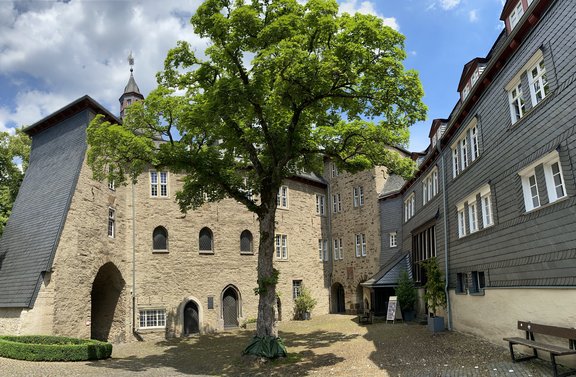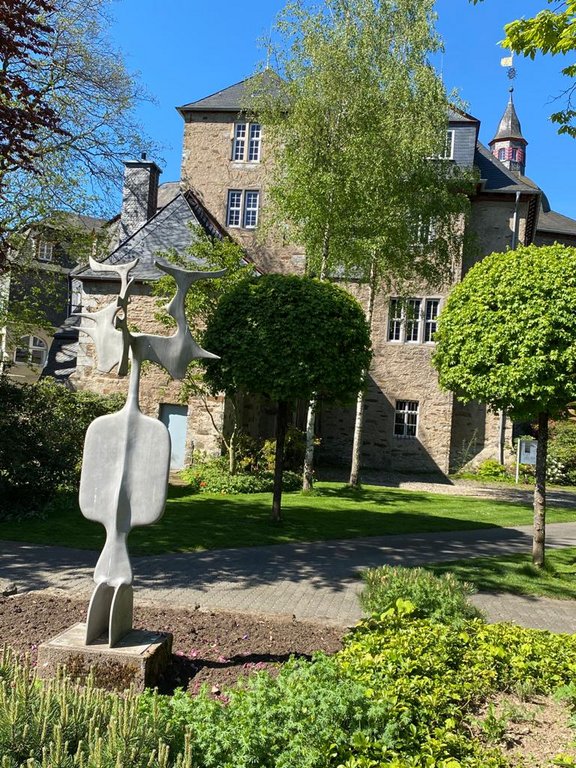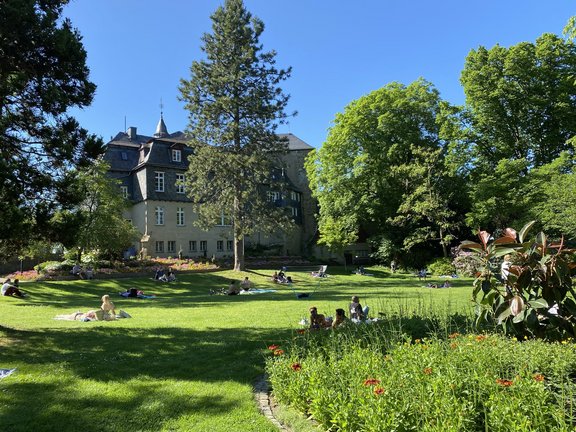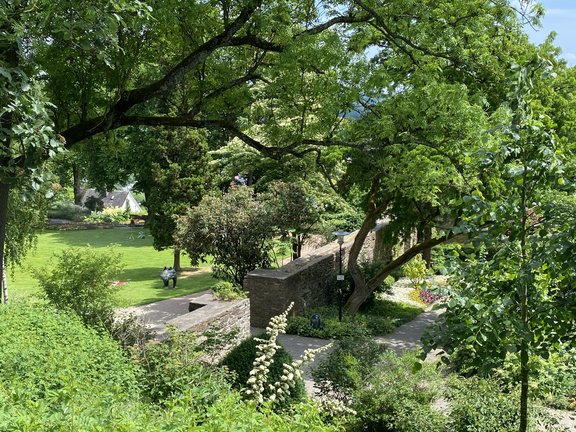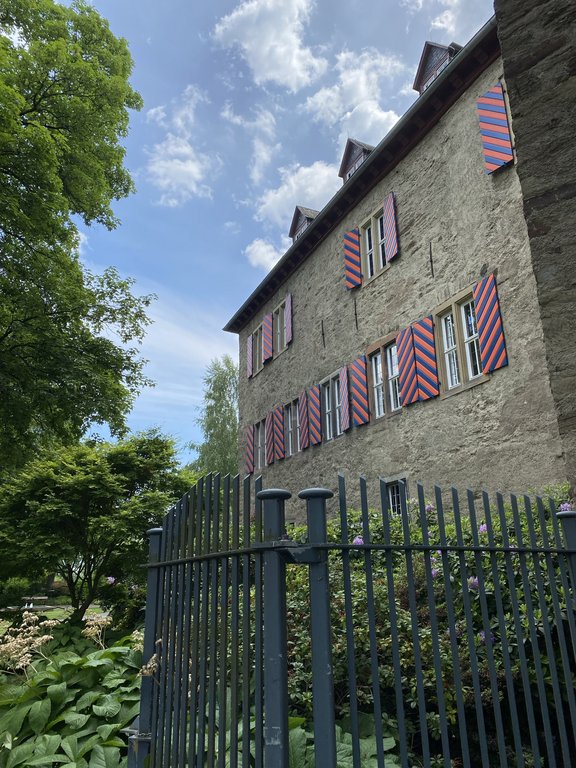magaSIn
The Oberes Schloss
The Upper Castle, or Oberes Schloss, stands atop the 307-metre Siegberg. How long it has stood there is uncertain; texts from the Middle Ages point to the presence of a castle around the year 1200, although it was not actually documented until 1259.
At that time, Siegen was governed by the Count of Nassau and the Bishop of Cologne, who shared two main gates as well as the main tower and the courtyard with fountain (which survives to this day). The oldest part of the complex is thought to be the three-level episcopal house, which faces the River Sieg and probably dates from the 13th century. Facing the Weiß tributary, the buildings used by the Count were known as the Grafenhaus. After being destroyed in the 18th century, this section was rebuilt as a twin-level half-timbered structure. According to tradition, a chapel stood in the connecting part of the two buildings.
Reformation and inheritance disputes
When Count Johann VII of Nassau-Siegen (1561–1623) arrived in Siegen to claim his inheritance, the city was already Protestant – and he was also a devout Calvinist. However, his son Johann VIII the Younger converted to the Catholic faith behind his father’s back – and so began a bitter inheritance dispute. Johann VII then shared his inheritance among his three sons, granting Johann the Younger the Oberes Schloss, while demanding that the city of Siegen and all its revenues should remain the common possession of all. After the death of his father, Johann VIII set out to re-Catholicise the city region, but his plans were thwarted by his half-brother Johann Moritz in 1632. With the backing of soldiers loyal to the Swedish King Gustavus Adolphus, he occupied Siegen and ultimately enforced the tripartite division of Nassau-Siegen desired by his father. Thenceforth, the Oberes Schloss became the seat of the Catholic line, while the former Franciscan monastery on the current site of the Unteres Schloss served as the seat of the Protestants.
The Oberes Schloss: history brought to life
A whole castle for just 30,400 marks? Such was the price asked when the castle was put up for sale by the city of Siegen in 1888. Since then, the castle complex has been either a home or a workplace to many citizens. Local officials worked here, the Masonic lodge of Siegen convened here and children from the Anna-Helenen-Stift orphanage also lived here. The Oberes Schloss has also accommodated the Siegerland museum since 1905. At first it occupied just a couple of rooms; today it takes up the entire building. The fortifications and the pretty castle grounds are also open to residents of the city.
For full information on the Siegerland museum at the Oberes Schloss, visit siegerlandmuseum.de
